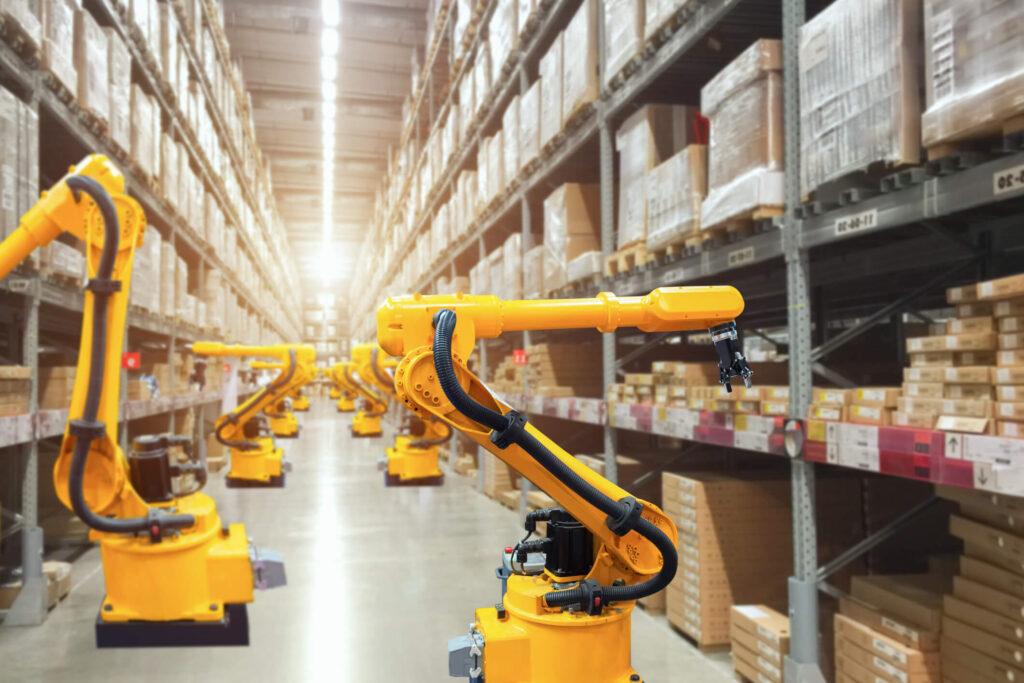A new era of efficiency and innovation in manufacturing has been set by the Industrial Internet of Things (IIoT), which is a revolutionary development that combines digital technologies with conventional methods.
With the goal of improving operational insights, streamlining procedures, and cutting costs, this guide provides a clear road map for manufacturers on how to use this network of connected devices and systems.
IIoT may influence the manufacturing industry going forward, and by 2028, the Industrial IoT market in Europe is expected to rise steadily and reach a market size of $124.80 billion, with a predicted 12.66% compound annual growth rate (CAGR 2024–2028). Will it be difficult for manufacturers to adopt new technologies but shift towards more sustainable and productive manufacturing? Read on to find out.
What is IIoT?
The term “Industrial Internet of Things” describes how the Internet of Things (IoT) is being expanded and used in industrial sectors and applications. IIoT helps businesses and industries operate more reliably and efficiently by putting a heavy emphasis on big data, machine learning (ML), and machine-to-machine (M2M) communication.
IIoT Adoption in Manufacturing

The goal of IIoT is to enhance the productivity, dependability, and performance of industrial processes through the network of connected machinery and devices that are outfitted with sensors, software, and other technologies. It is estimated that by 2030, there will be over 29 billion Internet of Things (IoT) devices globally, nearly doubling from 15.1 billion in 2020.
Already, IIoT helps enterprises to improve predictive maintenance, streamline production processes, and boost overall operational efficiency by gathering, analysing, and applying data in real-time. It is a crucial part of industry 4.0, combining automation, ML, and sophisticated data analytics to promote smart manufacturing and industrial procedures.
Key Technologies and Devices behind IIoT
Through data gathering, analysis, and automation, the Industrial Internet of Things leverages a range of essential technologies and equipment to improve industrial operations. Essential elements consist of:
- Sensors: Capture and act upon environmental and machine data.
- Actuators: Move or control a system or mechanism.
- Industrial Robots: Automate complex tasks with precision.
- RFID Tags: Track assets and manage inventory.
- PLCs: Control industrial processes.
- Barcode Scanners: Keeping track of stock in and out in inventory and financial reporting. Find out more about barcode scanners in this article.
- Networking Devices: Facilitate device communication.
- Edge Computing: Process data locally to reduce latency.
- Torque drivers: Collect and transmit data regarding the torque application.
- Cloud Platforms and Analytics: Store and analyse vast data sets.
- Cybersecurity Solutions: Protect data and networks.
- AR and VR: Enhance training and operational insight. Discover how to implement AR and VR in your business’ training.
- 3D Printers: Speed up prototyping and make complex parts as needed. Learn more about 3D printing here.
Top 5 Benefits of Implementing IIoT
In the digital age, organisations need to stay competitive, therefore utilising IIoT’s potential has become not only beneficial but also crucial. Manufacturers may reach new heights in productivity, quality, and sustainability by incorporating real-time monitoring, predictive maintenance, and advanced data analytics into their operations, but which are the top benefits of IIoT in manufacturing?
1. Increased Operational Efficiency
Implementing IIoT technologies allows for the continuous monitoring and analysis of manufacturing processes in real-time. Businesses may quickly locate bottlenecks and inefficiencies in their manufacturing lines thanks to this capacity. Manufacturers can boost throughput, decrease manual intervention, and streamline processes by utilising automation and data analytics. This results in lower operating costs and increased productivity.
2. Predictive Maintenance
The capacity of IIoT to predict equipment faults before they block production is one of its most important features. By gathering and examining data from sensors connected to machinery, algorithms are able to identify patterns indicating possible faults. By optimising maintenance schedules and minimising unplanned downtime, this proactive approach to maintenance lowers repair costs and increases the lifespan of essential equipment.
3. Enhanced Quality Control
Manufacturers are able to uphold high standards of quality throughout their production lines because of data granularity and process visibility that IIoT solutions offer. Manufacturers are able to identify variations in product quality in real-time and make prompt process adjustments to address these problems by continuously monitoring production data. This degree of control lowers waste from faulty items, guarantees constant product quality, and raises customer satisfaction.
4. Supply Chain Optimisation
Due to its ability to provide real-time visibility into each stage of the supply chain, Industrial IoT offers substantial advances in supply chain management. IIoT makes it possible for many supply chain components to coordinate more effectively, from checking raw material availability to keeping an eye on manufacturing schedules and inventory levels. This ultimately leads to a more flexible and effective supply chain by optimising inventory levels, cutting lead times, and improving responsiveness to market needs and changes.
5. Energy Efficiency
IIoT assists companies in identifying and putting into practice energy-saving strategies by providing accurate monitoring and control of energy use across a range of operations. Businesses can identify areas of energy waste and modify procedures by examining data on energy usage. This lowers the carbon footprint of manufacturing operations and results in significant cost savings. It also supports environmental efforts.
IIoT and Sustainable Manufacturing

By 2030, IoT solutions might cut greenhouse gas emissions worldwide by 16.5%. According to 94% of respondents of ABB’s study, Industrial IoT “enables better decisions, improving overall sustainability,” and IIoT has reportedly had a “significant positive effect” on operational decision-making, as per 57% of respondents.
The adoption of sustainable practices and the integration of new technologies such as IIoT by manufacturers brings with it both opportunities and obstacles. Funding, training, and system integration challenges notwithstanding, the advantages—like increased productivity, creativity, and competitiveness—far surpass the upfront costs. This shift is essential for maintaining long-term success and relevance in the sector, as well as for satisfying changing customer and regulatory expectations. Manufacturers may effectively manage these changes and establish themselves as leaders in their industry by carefully using cutting-edge technologies and sustainable practices.
Integrating Industrial IoT by Businesses
In order for manufacturers to prosper in a technologically advanced and fiercely competitive market, they need to strategically incorporate IIoT into their operations. Even in the face of organisational transformation and cybersecurity issues, IIoT technologies transform production through increased productivity, quality, and cost savings in the supply chain. The move towards more advanced technologies in Industrial IoT will improve quality, sustainability and efficiency while also opening up new avenues and creating opportunities. A customised plan that takes into account the advantages and particular difficulties faced by each manufacturer is necessary for the successful adoption of IIoT.
In terms of the future, IIoT in manufacturing will continue to expand and will become more essential to how companies innovate, produce, and compete. While achieving complete IIoT integration may be a challenging process, the benefits appear to be significant. Through the promotion of an innovative culture and keeping up with technological developments, organisations can take advantage of IIoT to not only endure but also flourish in the new industrial era.
FAQs
By connecting industrial equipment to the internet for data analysis and exchange, Industrial IoT enhances productivity, automation, and decision-making in industries including manufacturing and energy.
IoT focuses on consumer and commercial usage, improving daily life and convenience, including devices like wearables, smart vehicles, and smart home equipment that are meant to enhance convenience, convenience, and health. IIoT addresses industrial and manufacturing processes to enhance efficiency and safety, through data collection, analysis, and automation.
Supply chain optimisation, improved quality control, predictive maintenance, operational efficiency, and energy efficiency are just a few of the revolutionary advantages that IIoT technologies bring. Discover our top five advantages of Industrial IoT here.
Artificial Intelligence is the system’s brain, and the Industrial Internet of Things (IIoT) is similar to the system’s digital nervous system. Together these two technologies make up the AIoT which is a combination of AI and IoT. Through this connection, IoT networks may perform more efficiently and offer improved analytics, self-governing decision-making, and data processing.
Manufacturers may digitalise almost every aspect of their organisation with the help of Industrial IoT technology. Producers can mitigate the primary risk associated with manual labour and human error by decreasing manual processes and entries with automation, machine learning and big data analytics.











